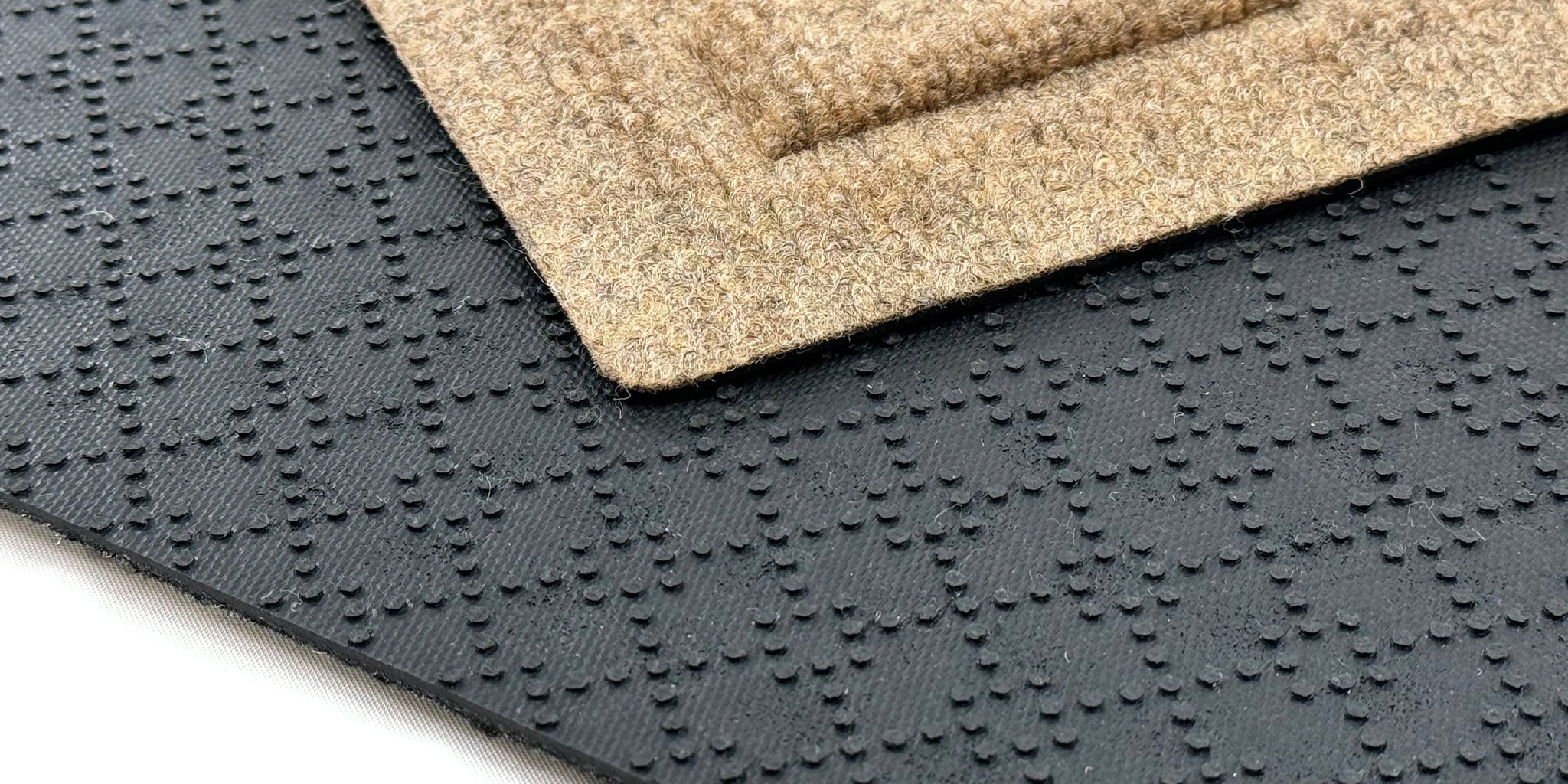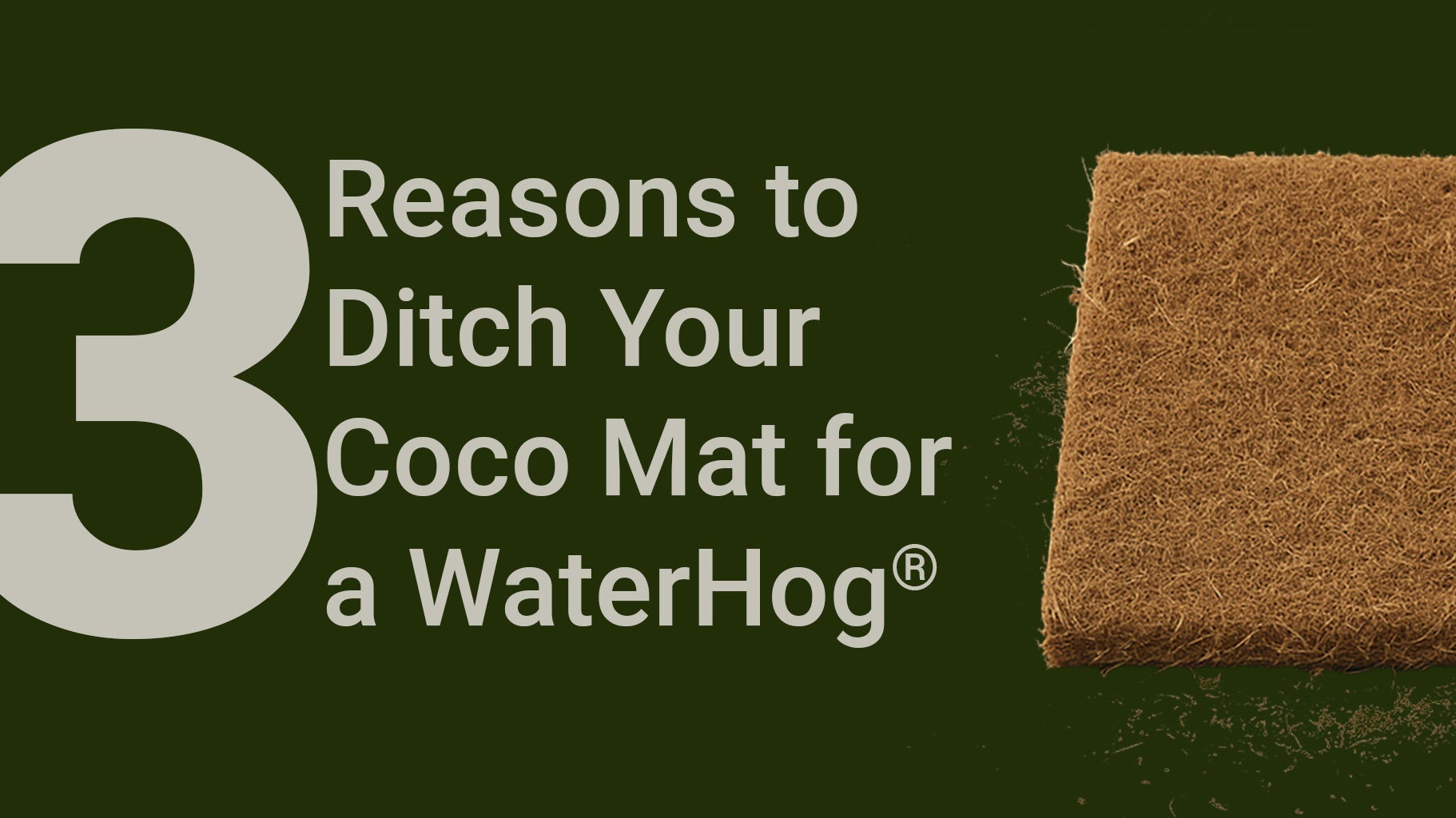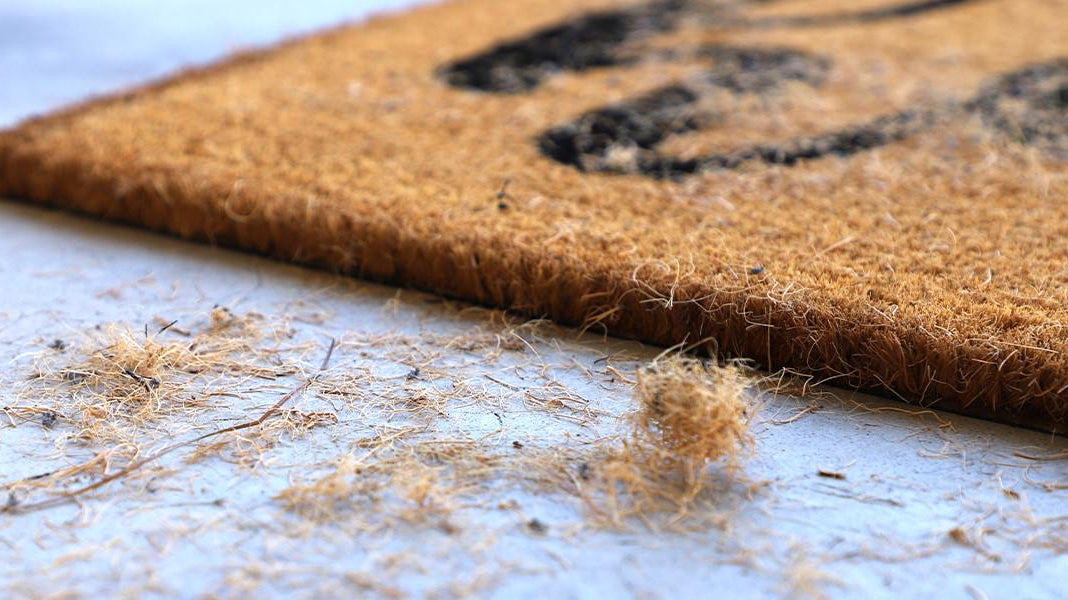It's a question we get from time to time, "Is the rubber used in WaterHog mats safe for my floors?" The answer for the overwhelming majority is yes, but there are some instances where you may need to do a little more research, or consider not purchasing a WaterHog (so painful to say). We always try to be transparent, so we'll call out some things to look for and consider when purchasing a WaterHog mat for your home.
Is rubber safe for my floors?
Our rubber-backed mats are made with high quality rubber that includes an anti-staining agent. Our mats are tested on a variety of flooring, and each batch of rubber is tested to ensure it meets strict guidelines for safe, long-term performance. As such, our mats are safe for the vast majority of flooring types, including:

Hardwood Flooring - To include solid hardwood, engineered hardwood, and bamboo flooring.
Tile - Including ceramic and porcelain tile as well as natural stone like travertine, slate, marble, etc.
Concrete and Stone - Including flagstone, brick, and pavers.
Vinyl Flooring - LVT/LVP, sheet vinyl, and vinyl tile. If you have vinyl flooring, please refer to your manufacturer’s care guide. Some vinyl flooring contains plasticizers that may leach out over time and react with rubber and other substances which could result in discoloration.
When should I avoid using rubber on my floors?
There are a few instances and flooring types where we would avoid the use of our products:
Heated Floors - Heated floors or any flooring near a significant heat source. Extreme or prolonged heat may negatively impact the rubber and lead to problems with the mat and/or floor.
Some Vinyl Flooring - Vinyl flooring that specifically warns against using rubber. Like we mentioned above, plasticizers contained in vinyl flooring may leach out over time and react with rubber and other substances, which could result in discoloration. Again, it's always wise to refer to the guidelines set by your flooring manufacturer.
How do I avoid stains and discoloration on my floors?
No matter your floor type, it’s important to follow these guidelines with any floor covering to help avoid staining or discoloration of your floor:
- Always make sure the mat/rug and your floor are both dry before placing the covering, and remove any moisture that may become trapped between your covering and the floor.
- Clean your floor beneath the mat and the back of the mat regularly to prevent dirt and debris from getting trapped underneath which could cause scratching or wear on the floor. Periodic removal and cleaning of the mat and floor also allows the floor to “breathe” and ventilate. Circulating air is moisture’s enemy and your floor’s friend.
- After cleaning your floor, if you used a cleaning solution, make sure all the cleaning solution has been removed and the floor is fully dry before replacing the covering. Chemicals left on the floor for prolonged periods may react with either your floor finish, the floor covering, or both.
- Though our mats are tested on many floor types, when you factor in different floor finishes and the myriad of possible floor cleaning chemicals, there are near-countless variables. We strongly encourage you to test yourself and watch your floor closely in the first few days and weeks. Pay special attention after you clean your floors, especially if you use a cleaning agent other than water. If you begin to notice discoloration, discontinue use of your mat immediately.
Play it safe, do your research, and buy with confidence.
Look, we’ve been in the matting business for a long time and incidences related to the rubber we make are very uncommon. If you have any concerns regarding our mats, we’ll always tell you to play it safe, refer to your flooring manufacturer’s guidelines, and don’t hesitate to reach out to our team. We’re here to help and build trust, even if that means you don’t buy from us.





